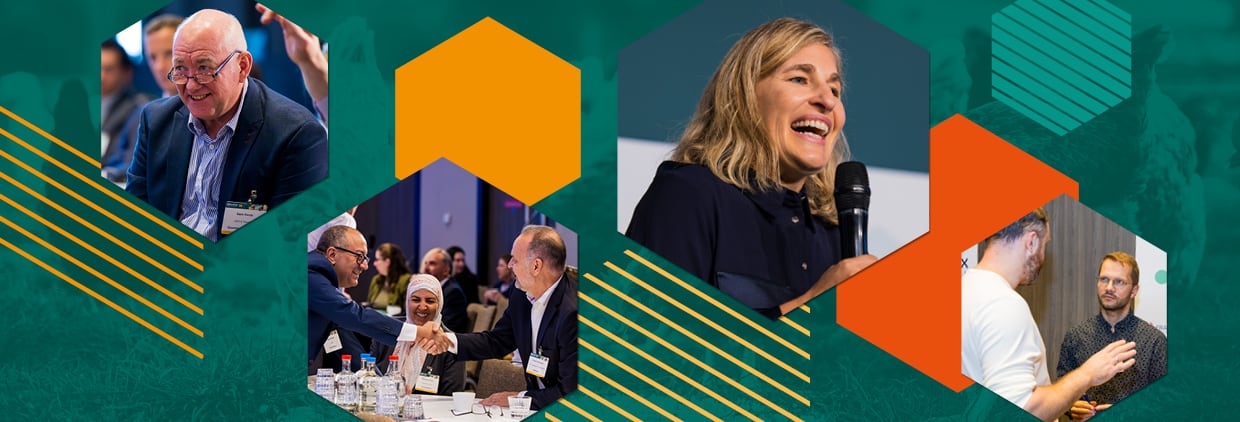While maintaining economic growth and mitigating climate-induced failures remain high on the European agriculture agenda, recent protectionist policies have resulted in a stronger stance on Europe’s strategic autonomy, and its ability to prioritize the production of essential agricultural goods to enhance food sovereignty.
Most recently, tariff changes, announced by President Trump in February 2025, are threating to harm supply chains, particularly between European producers and the US, leaving European exporters facing mounting financial challenges and uncertainty.¹
Aiming to bridge the gap between ambitious climate policies and on-the-ground farming realities, governments and organizations have been implementing strategies aimed to strengthen sustainability targets and safeguard livelihoods in growing regions.
The EU’s Vision for Agriculture, for example, is working to foster trust and dialogue across the entire value chain within the EU and globally, emphasizing close engagement with relevant institutions, farmers, food chain operators and civil society at local and regional levels, addressing their concerns and ideas.²
Also of note within the EU’s framework are Farm to Fork and the Common Agricultural Policy (CAP). The CAP is currently allocated across two main funds: the European Agricultural Guarantee Fund (EAGF) and the European Agricultural Fund for Rural Development (EAFRD). However, with growing concern that the EU will merge the CAP into a single fund, farmers are protesting the proposed changes.³
Among this uncertainty, how will the EU successfully bridge the gap between ambitious climate policy and on-the-ground farming realities, and ensure that sustainability targets don’t undermine farmers’ livelihoods?
As policies take shape, businesses across the industry will need to consider how to adapt and respond. How can financial stakeholders continue to allocate patient capital, beyond government incentives, to finance the transition to more sustainable practices and fund future innovations? And what role can new technologies play in supporting farmers with decision-making at farm level and along complex supply chains?
Balancing profitability and sustainability
For the industry, staying competitive is key – the question is how, particularly in light of geopolitical tensions and climate shocks. As profit margins become increasingly squeezed, farmers are faced with difficult decisions to remain profitable while being asked to comply with sustainability goals, from reducing carbon emissions and fertiliser input to soil regeneration and water usage.
Will farmers be pressured to put profit ahead of sustainability, even if this compromises long-term vision to transition to a more sustainable food system? What will it take to rapidly scale agri-tech, biologicals, and low-input, carbon-smart practice systems, while making sure innovation remains practical, affordable, and accessible to all producers?
Measuring biodiversity
The EU’s parliament policy on landmark nature restoration continues to push stakeholders for data-backed measures on sustainable farming practices across soil, water, biodiversity, and the importance of supply chain collaborations to optimize the value of regenerative agriculture for farmers and businesses alike. But actionable insights are only as valuable as the systems that support them.
As regulations around sustainability evolve, it can be challenging for farmers to accurately collect and report the data required for decision-making and compliance. The challenge lies in ensuring that any data can be used to inform wider, higher-level decisions, and this requires it to be easily understood and implemented.
For example, the Corporate Sustainability Reporting Directive (CSRD) imposes complex disclosure demands with over 1,000 data points to report on across 10 key ESG topics, including pollution, resource use, and biodiversity. These disclosures must cover short, medium and long-term considerations across the entire value chain – reporting on how a business is impacted by sustainability risks and opportunities, as well as how its own activities impact the environment.
Finance for biodiversity is another challenge. As demand for nature-based solutions rise, the industry must understand how natural capital can be recognized, verified, and financed as a credible asset class. A possible solution to protect and restore biodiverse ecosystems is to consider how nature credits can provide a private source of additional money.⁴
Real-world AI applications across the supply chain
Technology is moving in to bridge this gap. AI, for example, not only supports sustainable practices, but can also drive efficiency. AI and automation are vital tools for advancing regen ag: they can help farmers implement and streamline sustainable practices that can positively address food security and climate change.
With the potential to streamline compliance with EU directives – including the EUDR, CSRD, CSDDD, and ESG – digital technologies can make data usable across the value chain. Such tools can help to manage bottlenecks and regulatory requirements more effectively. AI can also assist with data management and risk assessment – for example, decision-making based on weather and crop yields that are crucial for farm management.
Using predictive models like these can help farmers make informed decisions regarding external factors beyond their control, thereby changing the game for risk management and profitability.
The sector is still trying to grasp how AI is being applied across the agri-food operations, from protein-based crop production discovery and next-gen breeding platforms to in-field robotics and smart automation.
Financing the transition
Faced with over-evaluations and a funding crunch, the agtech investment landscape is going through a reset – a somewhat daunting prospect for an industry backed by enthusiasm in recent years.⁵
Amid this uncertainty, today’s cautious funding climate is prompting stakeholders to rethink scaling agri-food innovation, raising questions such as:
- How are investors, banks and founders rethinking risk, timelines and value creation across agri-food innovation?
- How are successes and sustainable start-up growth being redefined?
- What alternative capital pathways, such as private and public markets or hybrid models, are needed to drive sustainable long-term growth and credible exits?
- What will it take for institutional and impact investors such as pension, infrastructure, and sovereign funds to confidently invest in the sector?
Some food for thought: according to Future Fit Food and Agriculture, investing $205 billion per year could reduce agri-food systems emissions up to half by 2030, while also contributing to nature, livelihoods, and food security goals.⁶ But despite this opportunity, the agriculture sector is facing increasing challenges in scaling investments and funding the transition to sustainable agriculture practices.
“Later-stage companies face a tougher path, and investors must decide whether we’re backing resilience or just delaying hard truths,” says Rogier Pieterse, Managing Director at Pymwymic.
”Too often, egos and board dynamics get in the way of what’s best for the company. It’s time to talk about what responsible capital really means. In the end this is part of growing up as an industry.”
Blended finance structures and private-public collaborations face a variety of challenges. These include misaligned incentives, insufficient collaboration across supply chains, and inadequate de-risking mechanisms for private capital.⁷
To overcome this, policy support is essential. The industry needs to rally co-financing models, beyond government incentives, between NGOs, retailers, and banks to de-risk the transition to sustainable farming and reward farmers for implementing carbon insetting practices.⁷
Building resilience through technology and collaboration
Driving action needed for a more resilient and innovative food system, the World Agri-Tech Innovation Summit London will take place on 22-23 September 2025.
Every year, the World Agri-Tech Innovation Summit London brings together over 900 industry leaders to drive the action needed to build a more resilient and innovative food system. Featuring decision-makers spanning across the agri-food value chain, including the European Commission, Kraft Heinz, Dyson Farming, Syngenta, Mars Foods, Arla, Bank of Ireland, Corteva Agriscience, Danone and Bayer, the summit will foster meaningful dialogue and high-value networking.
The programme is tailored for agri-food professionals navigating business strategies, investment, compliance and regulation, and commercialization pathways for the European agri-food sector. Discussions will explore scaling supply chain partnerships, measuring biodiversity and sustainable inputs, and how to translate research breakthroughs into real agtech innovations against climate and economic risk.
As large language models are predicted to alter the sector, sessions will unpack where AI is delivering real value today, what’s still hyped, and how collaboration between biotech start-ups, CPGs, and tech providers is accelerating the pace of deployment. World Agri-Tech is a powerful platform gathering the agribusinesses, food brands, farmers, cooperatives, policymakers, investors, technology leaders, and start-ups who want to secure the insights and contacts essential to their success to collaborate.
Register for the World Agri-Tech Innovation Summit now for two days of pivotal discussions and networking opportunities. Super Early Bird pricing ends on Thursday 10 July – use code ATN10 for an additional 10% off.
References
- EGOV. US tariffs: economic, financial and monetary repercussions.
- European Commission. Vision for Agriculture and Food.
- AA. European farmers staging protests over EU’s agricultural policy amid budget conference in Brussels.
- Bruegel. Finance for nature: how to improve funding for the protection of biodiversity.
- PitchBook. Agtech Report.
- Future Fit Food and Agriculture. The financial implications of mitigating agriculture and land use change emissions for businesses.
- World Business Council. Enabling private sector finance at scale for the transition.








